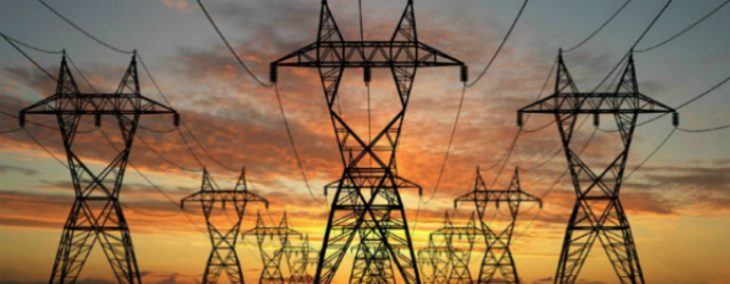Grid operators SPP, MISO ready to meet peak demand for hotter-than-normal summer
by June 21, 2017 9:09 am 325 views

Although national weather officials are predicting hotter-than-normal temperatures during the dog days of summer, grid operators across the U.S. say they are ready to meet peak demand in all regions of the U.S.
The North American Electric Reliability Corporation’s (NERC) recent 2017 Summer Reliability Assessment finds that there are enough resources to meet this summer’s projected peak electricity demand in all areas of the country. Anticipated reserve margins — the amount of expected unused electric generating capacity at the time of peak load — range from slightly less than 15% in New England to almost 29% in New York.
NERC, a nonprofit corporation that oversees regional electric reliability entities in the lower 48 states, Canada, and parts of Mexico, publishes summer reliability reports that assess existing and planned generating resources, anticipated electricity demand, and other factors in each region.
Bruce Rew, vice president of operations for Little Rock-based Southwest Power Pool, confirmed Wednesday that the Little Rock-based regional transmission organization (RTO) has adequate reserves to handle peak summer demand without any significant reliability issues going into June, July and August, traditionally the hottest three months of the year.
SPP, which oversees the bulk electric grid and wholesale power market in the central United States across 14 states, said utilities and transmission companies across the Little Rock RTO’s 564,000 square-mile footprint maintain a minimum generating capacity that’s 12% above their expected summer peak demand.
“We call that our planning reserve margin requirement,” said Larry Nickell, SPP’s vice president of engineering. “In practice, most of our load-serving members maintain more than that minimum requirement, and given their forecasts for the 2017 summer season we expect to have a margin of approximately 26%: that’s 14% more generating capacity than the 12% margin that is required.”
In early 2016, SPP released a study highlighting more than $240 million in fuel cost savings for utilities that provide power to many Arkansans because of recent energy grid investments and upgrades from 2012 to 2014.
The study, conducted by the Washington, D.C.-based economic consulting firm The Brattle Group, analyzed the value provided by 348 transmission upgrades that involved almost $3.4 billion of capital investment for utilities during the first year of operation of SPP’s wholesale energy market.
Meanwhile, the Midcontinent Independent System Operator (MISO), which operates a state-of-the-art command center in Little Rock, said it expects summer demand to peak at 125 gigawatts, with 148.5 GW of available capacity. The MISO region’s 23.5 GW reserve in 2017 – providing an 18.8% margin – is up from 2016 primarily due to a reduction in projected peak demand in the MISO North and Central regions, officials said.
“MISO continues to work closely with stakeholders to ensure the reliability and efficiency of the bulk electric system,” said Todd Ramey, vice president of system operations for the Carmel, Ind.-based grid operator. “We appreciate the ongoing efforts of load-serving entities and states to ensure adequate resources are in place.”
In late 2015, MISO’s board of directors approved a $2.7 billion expansion plan across the grid operator’s 15-state footprint, including $170 million in investments that will go toward upgrading Arkansas’ aging electricity infrastructure. In late 2013, Entergy Corp. completed the integration of its transmission system into MISO following more than two years of planning and preparation with the New Orleans-based parent of Entergy Arkansas and numerous other stakeholders.
RENEWABLE ENERGY ON THE RISE
Nationally, data from NERC’s Summer Assessment indicates that the total U.S. load forecast, when weather adjusted, will be approximately 1.1% higher than it was last summer. Meanwhile, the total generating capacity in the U.S. has increased by approximately 1% since last summer and over 20 GW of new generating capacity is expected to be installed nationwide through the summer. A majority of the capacity additions will come from renewable resources such as wind and solar. Nearly 10 gigawatts (GW) of generating capacity from coal and natural gas has retired since May 2016.
NERC anticipates that the total installed nameplate wind capacity this summer will be 82 GW, about 8% higher than in 2016. NERC also anticipates that about 6 GW of new utility-scale solar capacity will come on-line this summer. The growing importance of renewable resources has continued in recent years, as both wind and solar capacity continue to expand. Grid operators are pursuing operational solutions to better integrate wind and solar resources as part of their operational and planning activities, officials said.
The anticipated reserve margins for all U.S. regions in NERC’s assessment are higher than their reference margins this summer, except for the Independent System Operator for New England (ISO-NE). In ISO-NE, the anticipated reserve margin is 14.9%, slightly lower than the reference margin of 15.1%.
HOTTER WEATHER MEANS HIGHER ELECTRIC PRICES
The National Oceanic Atmospheric Administration (NOAA) forecasts above normal temperatures for most of the continental U.S. in June, July and August. NOAA’s forecast shows that nearly all regions are likely to see above normal temperatures, with the strongest possibility for above normal temperatures in the North Atlantic, Southeast, and Gulf of Mexico regions.
Much of the Central, Great Lakes, and Western regions are also likely to see above normal temperatures. At this time, it is unclear whether the northern part of the Central region is likely to see normal, below average, or above average temperature levels.
Warmer temperatures require increased power generation to meet increased demand for home and office cooling. In 2016, for example, the hottest average days correspond to above-average locational electricity prices. However, increased demand due to temperature is only one factor that could affect market prices this summer, industry officials say.
Since last summer, more than $5 billion of transmission upgrades entered operation in the six RTO/ISO markets, according to analysis by the Federal Energy Regulatory Commission. These infrastructure investments may help relieve grid congestion and could reduce some of the high price volatility this summer, FERC said.
